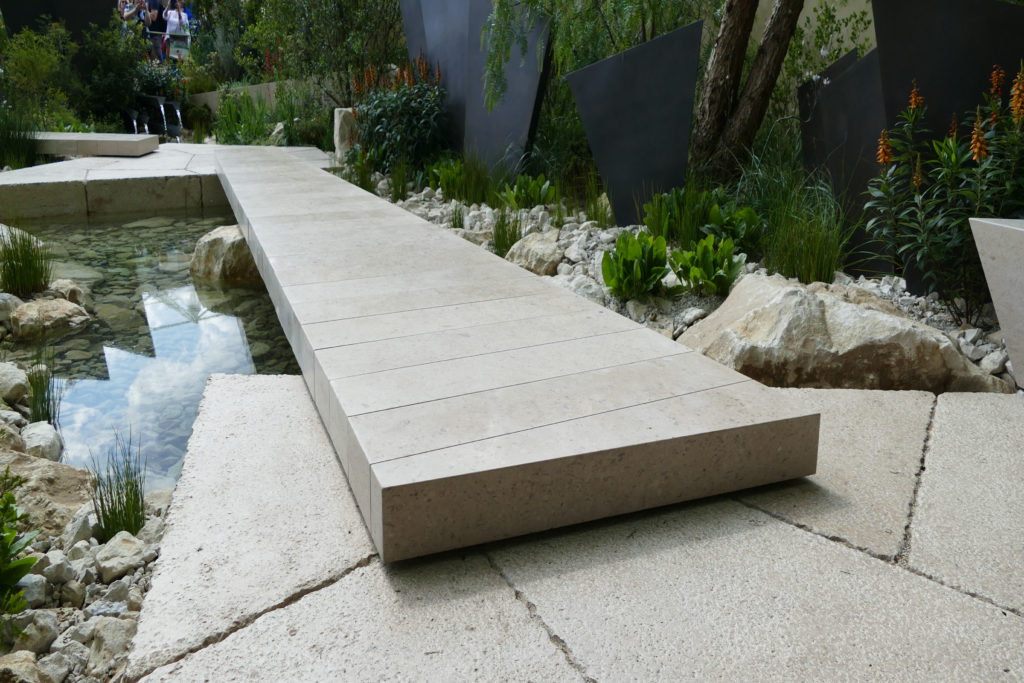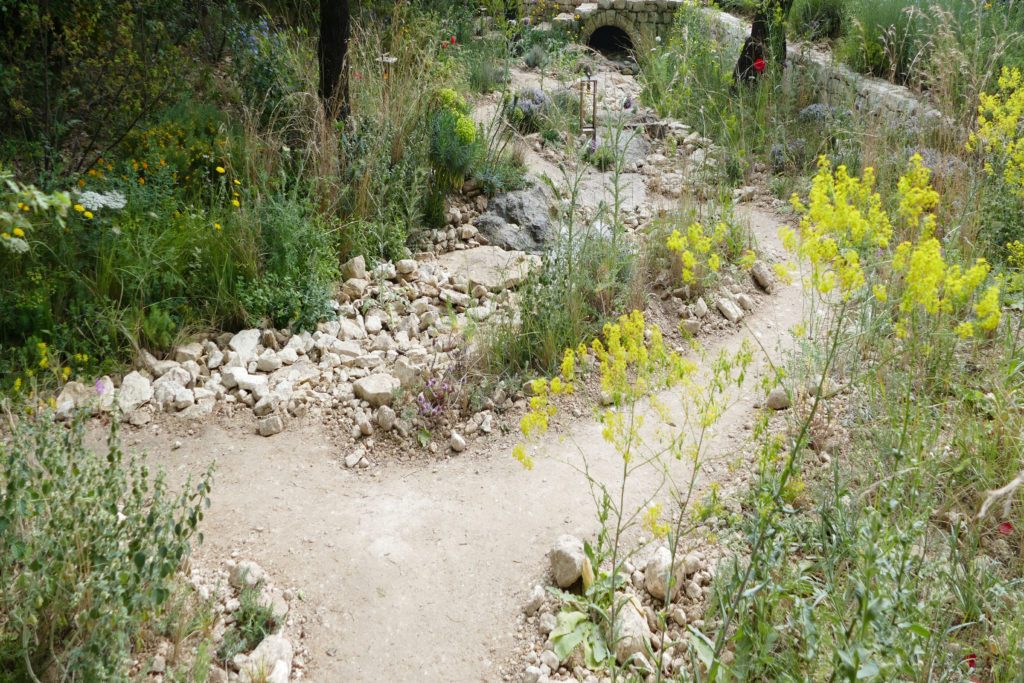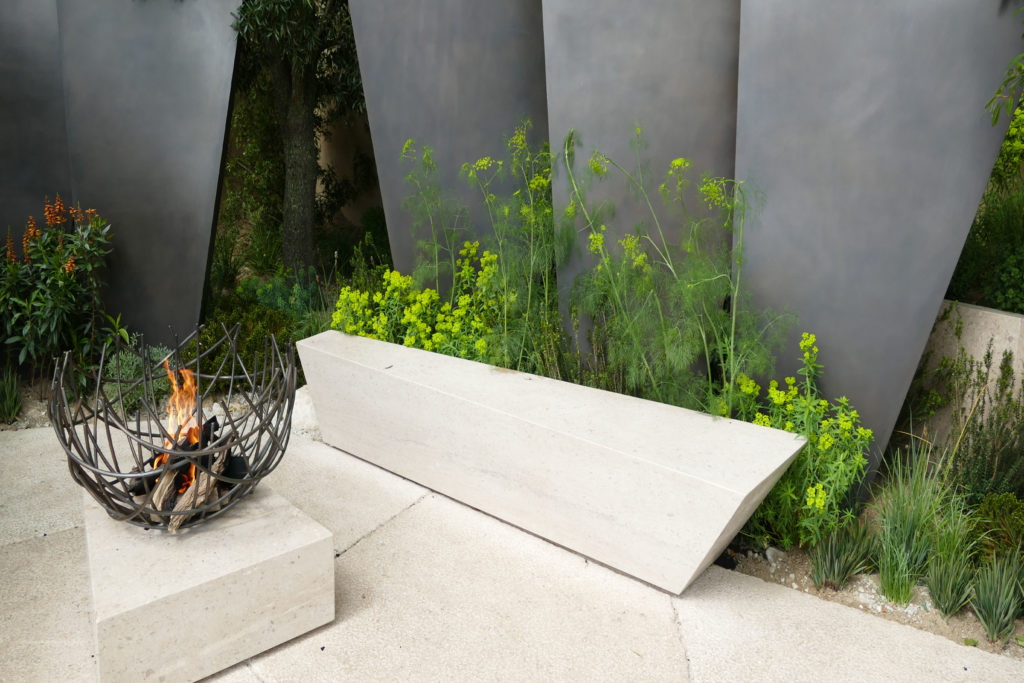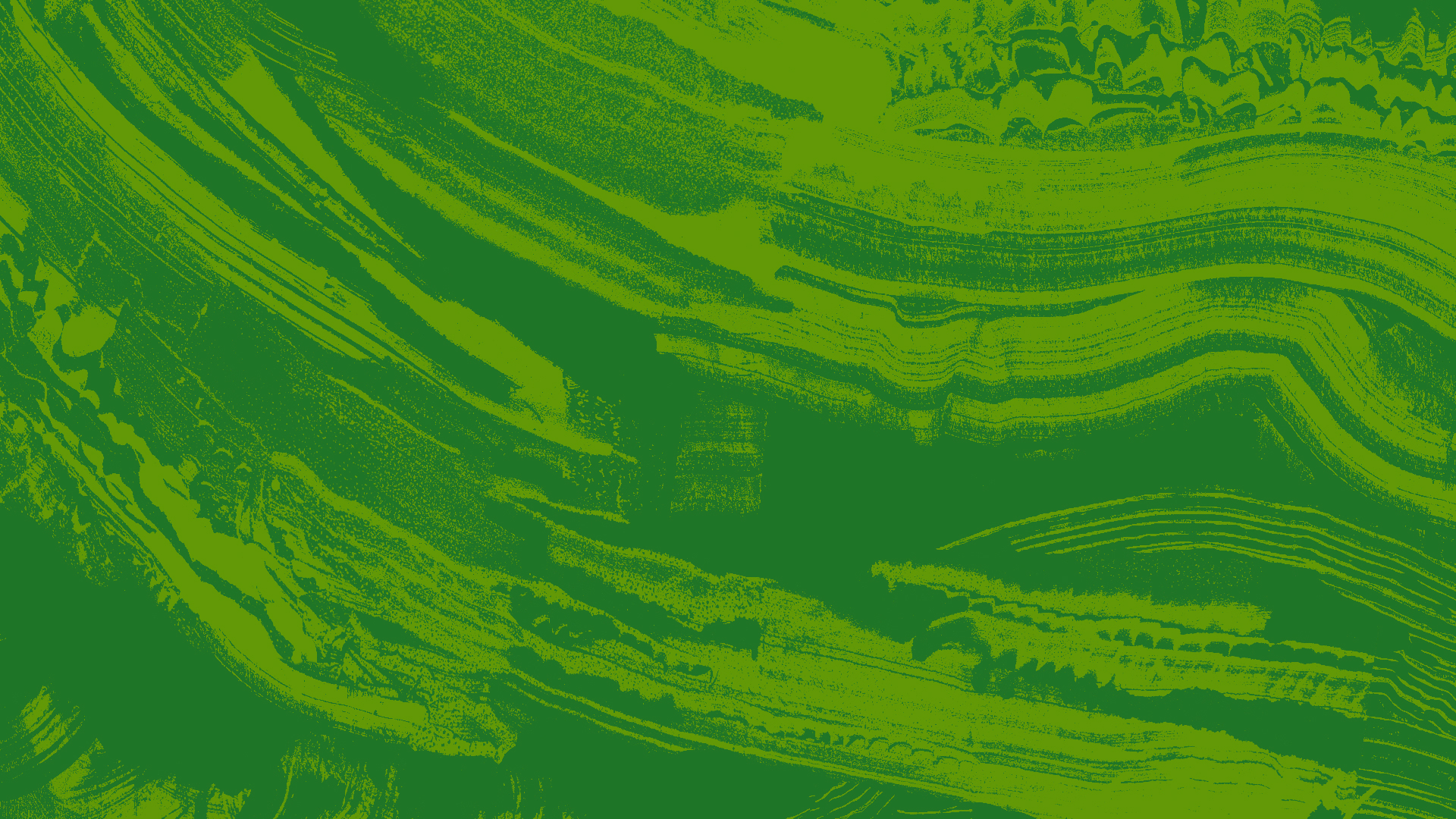
Confident Design from Andy Sturgeon at this year’s Chelsea Flower Show
The gates have closed on this year’s Chelsea Flower Show. Actually, I thought that 2016 was quite a good year. True there were some ‘oddities’ – Diarmuid Gavin’s Great British Eccentrics Garden perhaps? Anyway, it was a pretty diverse bunch and a lot of really good gardens. One interesting theme which started in 2015 and gathered pace this year was the ‘reconstructed landscape versus designed garden’ debate. Last year’s best in show – Dan Pearson’s Chatsworth Garden – was a clear example of the former. It was a brilliantly skilful piece of design and construction, but there were mutterings amongst the garden design ranks that it was ‘not really design, but just a piece of landscape re-creation’. I think this undermines the skill and dexterity of the designer. How much of this was sour-grapes at not winning best in show themselves was not clear; nonetheless, there is a serious point here. The implication was that all other things being equal, original design should be valued more than re-creation.

James Basson’s Provencal recreation at Chelsea 2016
This year’s winner (Andy Sturgeon’s Jurassic garden for the Telegraph) was firmly in the ‘designed’ camp. It was a head and shoulders above the other serious contenders and was a supremely confident piece of design, down to the last detail. Interestingly, the other two clear contenders for the title (in my opinion) were Cleve West’s garden for M&G and James Basson’s recreation of a parched Provençal landscape for l’Occitaine. The three gardens together almost make up the spectrum from one end (James’) to the other (Andy’s), with Cleve’s garden occupying a deftly executed middle ground.

Subtle use of colour and form in Andy Sturgeon’s garden
There is of course a great deal of precedent for this in English Garden Design. In the C17th, garden design in this country had been largely pale versions of continental renaissance creations. The English landscape movement swept much of that away in favour of what was essentially the modernism of its time – based on simple natural forms and recreation of paintings of landscapes. However, what is more relevant to today’s ‘re-created landscapes’ is the picturesque movement that followed. This was based on an essentially romanticised appreciation of the savage side of nature – wild rock formations, twisted trees and magical woodland dells. To me, Dan Pearson’s 2015 garden speaks directly from this tradition. This is not surprising, partly because the garden was based on a piece of historical landscape design, but also because Dan has always had a great affinity with and appreciation with nature. This is evident in much of his work, but never in a cloying way. By contrast, Andy Sturgeon’s designs whilst rooted in the natural world are much more conscious design statements.
My own designs are also conscious statements of form where geometry plays a strong part, even if it is sometime distorted (Spokane) or curved (Pavilion Apartments). Recreations of natural landscapes can be subtle, beautiful and clever, but I wonder whether Chelsea Show Gardens shouldn’t be more about pushing the boundaries of design? Most of the great gardens that stick in my mind certainly fall into this category.
Or perhaps the two ends of the spectrum are equally valid, just different – what do other readers think?

